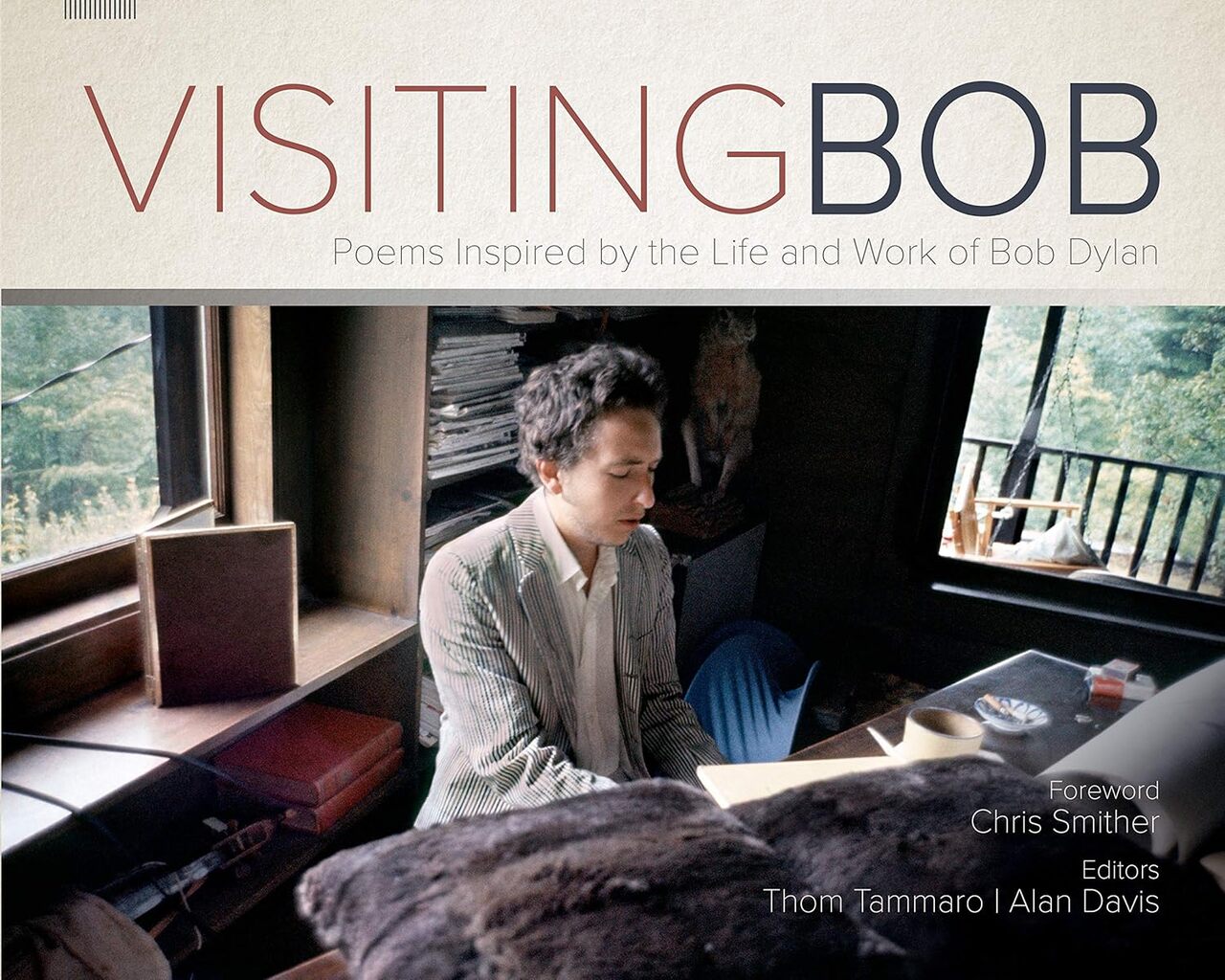Visiting Bob: Poems Inspired by the Life and Work of Bob Dylan

LINER NOTES by Thom Tammaro
Late autumn, 1965. 7:30 AM. I’m in my bedroom sitting on the edge of my bed, reading the liner
notes to Highway 61 Revisited, “On the slow train time does not interfere…” and listening to “Just Like
Tom Thumb’s Blues” and “Desolation Row” repeatedly on Side 2. I have to lift the tone arm of my
RCA Hi-Fi each time and set it in the right groove to repeat the two-song sequence totaling sixteen
minutes and fifty-three seconds. I’m on the cusp of fourteen, and in ninth grade. My mother is yelling
for me to get moving or I’ll be late for school. Repeat. Repeat. Repeat. The ten-block walk to school
in damp, drizzly western Pennsylvania November. Steel mill fires flaring in the dawn light. Yes, I am
late for school.
Listening to those two songs becomes part of my early morning ritual for weeks. The lyrics burn
themselves inside my head. I don’t know yet that Dylan is channeling Rimbaud’s “My Bohemian Life.”
Or that the writing style and technique have names—surrealism and stream-of-consciousness. (Dylan
is writing Tarantula around this time, but it wouldn’t be published until 1971). Given the nightmarish
visions in both of those songs, you might think I was on the verge of leaping off childhood’s
precipice into the void of adolescent angst. But I don’t remember myself as an angsty teen.
Rather, I went off to school those autumn mornings mesmerized by language. And it was there,
about this time, and with the good fortune of having a couple of fine English teachers, that I began
to discover metaphor and simile, narrative and allegory, image and sound. The dance of syllables
across the page. I’m about to learn that language is symbolic. Convergences that would alter my life
forever. To borrow from a Neruda poem: “And it was at that age ... Poetry arrived in search of me”
(“Poetry”). I came to poetry (and literature) because of Dylan. I came to Dylan because of his
language—or I should say that Dylan came to me through his language. Foremost for me, listening
to Dylan has always been a literary experience: “Don’t Think Twice, It’s All Right.” “Visions of Johanna.”
“Positively 4th Street.” “Sad Eyed Lady of the Lowlands.” “Just Like a Woman.” “All Along the Watchtower.”
“Tomorrow is a Long Time.” “Forever Young.”
Of course, that language was delivered in music. Is there a more perfect song than “Don’t Think Twice, It’s
All Right?” Sometimes narratives sans choruses. But for me, as it was then, sitting on the edge of my bed
reading Dylan’s liner notes, it always has been about the language. Years later, I read an interview with
Joni Mitchell in Rolling Stone. She remarked, “And when I heard ‘Positively 4th Street’ [1964], I realized
that this was a whole new ballgame; now you could make your songs literature. The potential for the song
had never occurred to me.”
And so these one hundred poems—conversations, communions, improvisations, colloquies, riffs,
meditations, parleys, dialogues, arguments with Dylan’s life and work. On the slow train, time does
not interfere.